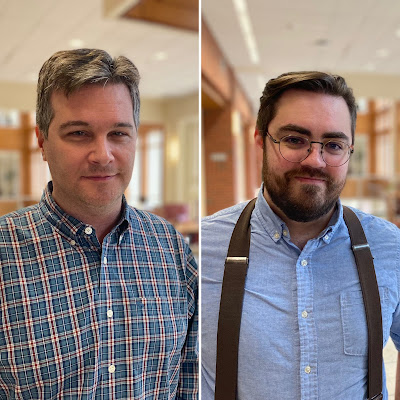Students develop cancer technology
By Paighten Harkins
Campus Reporter for OU Daily
A group of OU researchers tucked away inside the Stephenson Research and Technology Center is developing new technologies to detect certain cancers at earlier stages.
“We build toys,” team leader Hong Liu said.
These toys are the equipment that Liu, chair of Biomedical Engineering and his team have developed to make cancer detection a more streamlined and efficient process.
The researcher is focusing on phase-contrast imaging and how it can be used for earlier and less invasive treatment of breast cancer.
Normal X-ray imaging relies on how much radiation objects absorb, according to the OU Biotechnology website. These differences create contrasting images. However, in phase contrast X-ray imaging, the X-ray beams collect information as they pass through the body.
This creates a better picture because it picks up weakly absorbing areas as well and exposes patients to less radiation, according to the website.
The current process to detect breast cancer is slow and painful, research associate Molly Wong said. With this technology, the team hopes to make it a more bearable process.
“Our goal is to be able to provide [patients] a new technology that has a lower dose and allows [doctors] to actually detect the cancer right on the X-ray so [patients] don’t have to go through the not-so fun-process of having a biopsy and waiting,” Wong said.
The team also studies ways to detect leukemia and cervical cancer earlier and easier.
They created a machine called the Automatic Cytogenetic Image Scanning System that helps diagnose diseases such as leukemia much more efficiently, graduate research assistant Yuchen Qiu said.
The typical process of identifying leukemia is a strenuous, manual process, he said. Physicians identify a cell using a low-magnification lens, and then switch to a higher magnification to look for any abnormalities in the cell’s chromosomes.
The process is even harder because the cells clinicians are looking for only account for four percent of all cells, Qiu said.
However, this new machine does all of this work automatically.
This research could one day “help people live longer,” Liu said.
Campus Reporter for OU Daily
A group of OU researchers tucked away inside the Stephenson Research and Technology Center is developing new technologies to detect certain cancers at earlier stages.
“We build toys,” team leader Hong Liu said.
These toys are the equipment that Liu, chair of Biomedical Engineering and his team have developed to make cancer detection a more streamlined and efficient process.
The researcher is focusing on phase-contrast imaging and how it can be used for earlier and less invasive treatment of breast cancer.
Normal X-ray imaging relies on how much radiation objects absorb, according to the OU Biotechnology website. These differences create contrasting images. However, in phase contrast X-ray imaging, the X-ray beams collect information as they pass through the body.
This creates a better picture because it picks up weakly absorbing areas as well and exposes patients to less radiation, according to the website.
The current process to detect breast cancer is slow and painful, research associate Molly Wong said. With this technology, the team hopes to make it a more bearable process.
“Our goal is to be able to provide [patients] a new technology that has a lower dose and allows [doctors] to actually detect the cancer right on the X-ray so [patients] don’t have to go through the not-so fun-process of having a biopsy and waiting,” Wong said.
The team also studies ways to detect leukemia and cervical cancer earlier and easier.
They created a machine called the Automatic Cytogenetic Image Scanning System that helps diagnose diseases such as leukemia much more efficiently, graduate research assistant Yuchen Qiu said.
The typical process of identifying leukemia is a strenuous, manual process, he said. Physicians identify a cell using a low-magnification lens, and then switch to a higher magnification to look for any abnormalities in the cell’s chromosomes.
The process is even harder because the cells clinicians are looking for only account for four percent of all cells, Qiu said.
However, this new machine does all of this work automatically.
This research could one day “help people live longer,” Liu said.


